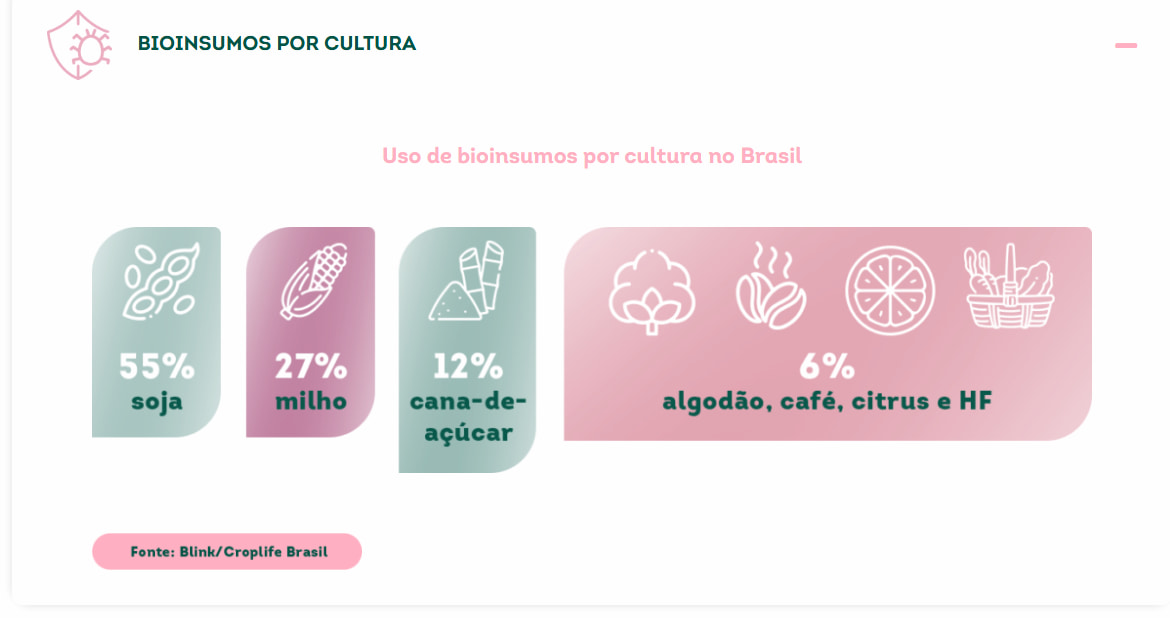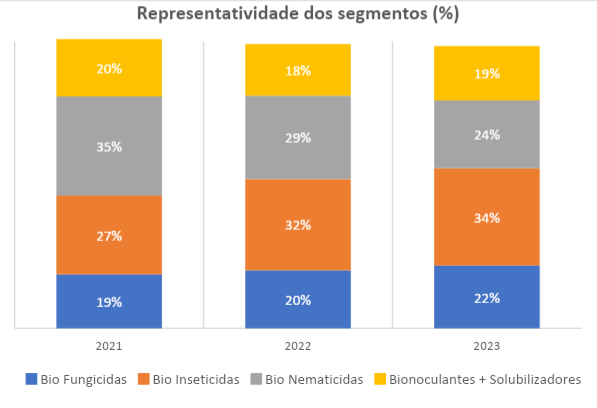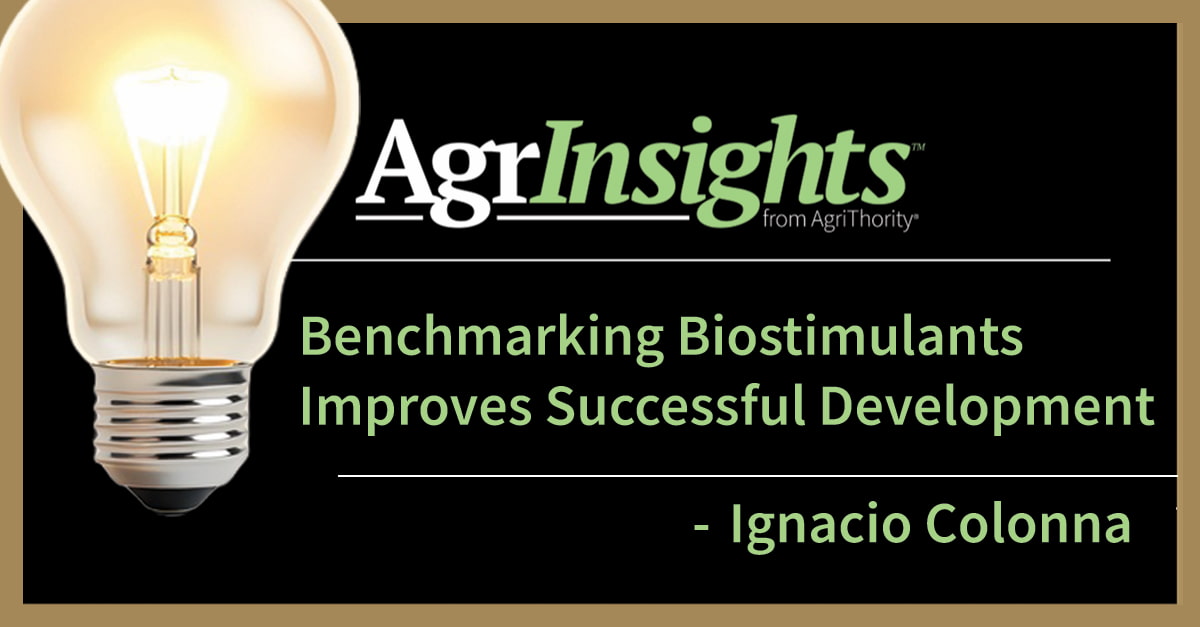Brazil has been using bio-input products in agriculture for decades. Some very well-known records date back to the 1960s when they were applied to manage pests in sugarcane and soybean. Most Brazilian companies market bio-inputs as part of an integrated strategy and recommend this solution in combination with other inputs on the farm. In Brazil, the emphasis for bio-inputs is on problem-solving in tropical, high-pressure environments where resistance management is critical.
The integration of bio-inputs and other tools can enhance crop results, contribute to resistance management, increase environmental sustainability, minimize risks to farmers, society, and ecosystems.Bio-inputs are protecting soil health and promoting a more balanced agricultural system.
Bio-Inputs Adoption in Brazil
According to CropLife Brasil, for the latest season, the highlight in the average adoption rate by segment was bioinsecticides, which increased from 26% to 30%. Among biofungicides, it went from 11% to 13%, bionematicides from 23% to 24%, bioinoculants from 54% to 56%, and nutrient solubilizers from 4% to 5%.
Among the main crops, 62% of bio-inputs use in Brazil was directed toward soybeans, an increase of 7 percentage points compared to the previous season. Followed by 23% in corn, 10% in sugarcane and 6% for cotton, coffee, citrus, and fruits and vegetables (F&V).
There are other examples of the use of bio-inputs working in a perfect combination within the farmer system:
Soybean: inoculants for nitrogen fixation, bio-inputs for nematodes and fungus- causing white mold (Sclerotinia sclerotiorum), bioinsecticides for whitefly (Bemisia tabaci) and caterpillars.
Corn: bio-inputs for nitrogen fixation, for control of corn leafhopper (Dalbulus maidis) – responsible for transmitting stunt diseases and the control of fall-armyworm (Spodoptera frugiperda), where a combination of different tools such as biotechnology traits, chemicals, pheromones and also bioinsecticides have been used.
Evaluating Bio-inputs
In recent years, the adoption of bio-input solutions in Brazilian agriculture has expanded significantly, driven by growing awareness of sustainable farming practices. This trend has encouraged both farmers and consumers to seek alternatives that combine profitability with lower environmental impact.
The potential area treated with bio-inputs in the 2024–2025 crop season reached 156 million hectares. The average adoption rate by area increased from 23% to 26% compared to the previous two seasons, based on a planted area of 77 million hectares (CropLife Brasil, 2025)
To be incorporated in the farm’s system, some criteria are normally considered to make that decision:
- Target Pest or Disease Profile: identify the problem, could be pests, diseases, or nematodes affecting their crop and select those products proven to be effective against those specific targets. Bio-inputs can have a narrower spectrum of activity than chemicals, so precision is key.
- Efficacy Data and Field Trial Results: Adoption depends heavily on local field trial results and efficacy data, preferably from independent research institutions or technical consultants. Brazilian growers value practical, in-field evidence before trusting new bio-inputs products.
- Compatibility with Existing Farm System: Grower’s check whether the bio-input can be integrated into their farm strategy, considering application timing, compatibility with chemical pesticides, and resistance management needs.
- Cost-Benefit Evaluation: Though bio-inputs typically have a lower environmental impact, farmers carefully weigh product cost, application logistics, frequency of use, and expected ROI compared to chemical options.
- Sustainability: alignment with regenerative agriculture practices and environmental, social, and governance principles.
The market often demands bio-inputs that can be easily integrated into existing operations without extra labor or equipment. Product adoption is heavily driven by demonstration plots, on-farm trials, and peer validation. Growers in Brazil trust what works in their region and crop, and companies often invest heavily in field days and technical visits to showcase performance.
Learnings for Other Regions
Brazil proves bio-inputs succeed when they’re practical, proven, and integrated with the current farm practices. Other regions can replicate this by focusing on farmer-centric solutions, local validation, and systemic compatibility. Some additional insights for other regions:
- Bio-inputs thrive as complements, not replacements, for conventional chemistries.
- Solutions that disrupt their routines can be more difficult to adopt by growers.
- Growers trust what they see working on their land.
- Bio-inputs must perform under intensive pest/disease pressure.
- Regulation and research accelerate market growth.
- Farmers need confidence to switch practices.
When your Research is ready for Development, turn to AgriThority® for strategic and scientific business, market, and product development, as well as regulatory expertise. As an independent global resource, we focus on exploring potential, expanding market access, and evolving production for greater food security and sustainability. Forward-thinking agriculture experts with deep experience are the core of AgriThority®.




